Centering Indigenous Knowledge
June 9, 2023
As Canadian architecture schools strive to reconcile and achieve parity with this country’s Indigenous Nations, designing for and with Indigenous communities requires political awareness and landscape sensitivity.
At Carleton University, Assistant Professor K. Jake Chakasim continues to centralize the role of Indigenous knowledge in advanced studies by asking graduate architecture students: How do we, as designers, come to understand people who are different from ourselves? On what ground of understanding? And what are the cues (or consequences) that arise out of these design actions?
Chakasim’s Global Indigenous Option Studio is part of an effort at the Azrieli School of Architecture & Urbanism (ASAU) to promote an understanding of the land, ecology, and culture of Canada’s Indigenous peoples through the lens of architecture and planning.
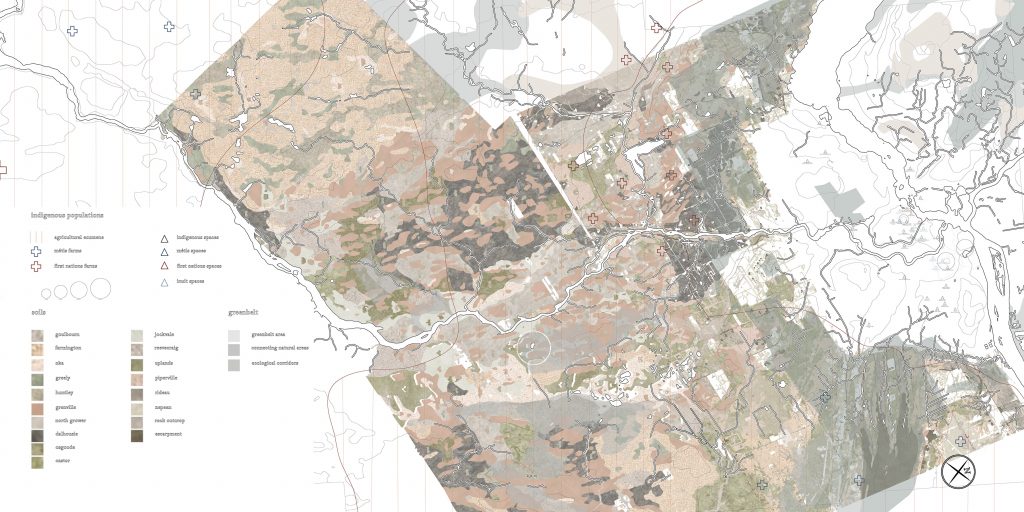
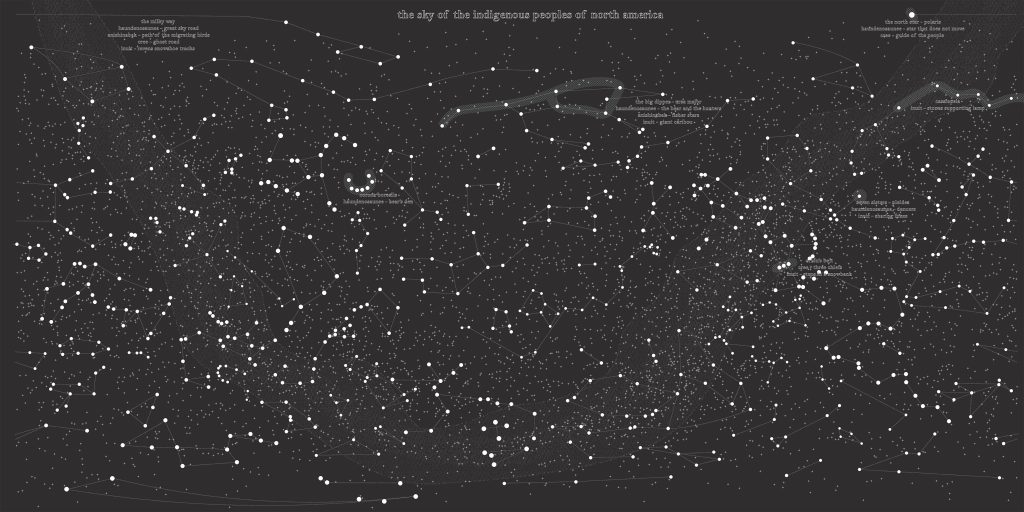
Mapping the Landscape through Indigenous Creation Myths by Frank Hinoporos and Ashley Mowry
Work from the 2023 Global Indigenous Option Studio
Entering its third year, the Global Indigenous Studio upholds ASAU’s commitment to fulfilling the Kinàmàgawin (Learning Together) Report. Specifically, the Call to Action #19: Whereas land-based practices are critical to the (re)production of Indigenous culture and identity. Furthermore, whereas Indigenous land-based practices embody highly complex knowledge systems and practices, we call for opportunities for Indigenous students (all students) to participate in land-based learning.
By applying an Indigenous worldview to the Option Studio, real-life planning and design knowledge exchanges in the 2022-2023 school year occurred with:
• the MoCreebec Eeyoud community of Northern Ontario with the design of a new community layout with supportive infrastructure;
• land-based learning within the Haudenosaunee (Six Nations) Territory;
• traditional and contemporary agricultural practices with the Narragansett Tribe of Rhode Island;
• collaborative seminar discussions with Harvard University’s Graduate School of Design and the Indigenous Design + Planning Institute at the University of New Mexico while visiting monumental landscapes and Indigenous architecture, such as Chaco Canyon, New Mexico.
A publication featuring work produced in this school year’s studio is forthcoming.

An artifact documenting experiences, understanding, breakthroughs, and setbacks experienced throughout the semester.
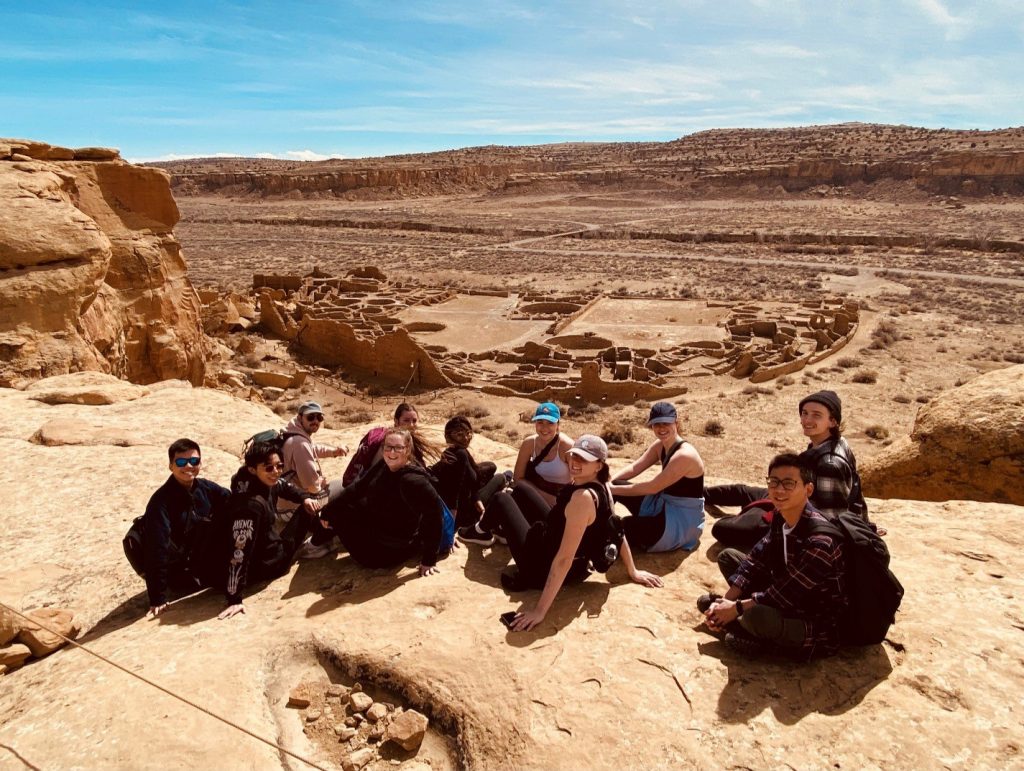
Students at Chaco Canyon, New Mexico. Left to right: Ricky Tong, Dan Vu, Frank Hinoporos, Ashley Mowry, Pamela Reid, Krushalni Mohanarathnam, Charlotte Egan, Haley Baric, Lauren Liebe, Justin Liu, Will Hermer
Pedagogical Arc
The studio’s pedagogical arc privileges and centres Indigenous ways of knowing, doing, and making. These ways relate to specific ecologies in countless locations worldwide, so the cultural practices, languages, and protocols of one Indigenous community may look very different from another. Yet, Indigenous ways of knowing are commonly steeped in a deep respect for the land and the necessity of a reciprocal relationship with the land.
By applying a strength-based model of design throughout the studio — as opposed to a defunct deficit model often applied to Indigenous communities — students come to appreciate that the resilient nature of Indigenous peoples’ survival is attributed to sustenance, what the land has to offer. This, in turn, shapes how the knowledge of Indigenous peoples is expressed and put into design action throughout the studio, which centralizes the importance of lived experience.
Students come to appreciate that what differentiates Indigenous knowledge holders from Western practitioners is the embodiment of place and the cultural practices within. The expression of Indigenous knowledge and its actions and principles of stewardship are extremely valuable sources of design information regarding the observation and operation of local and regional ecosystems.
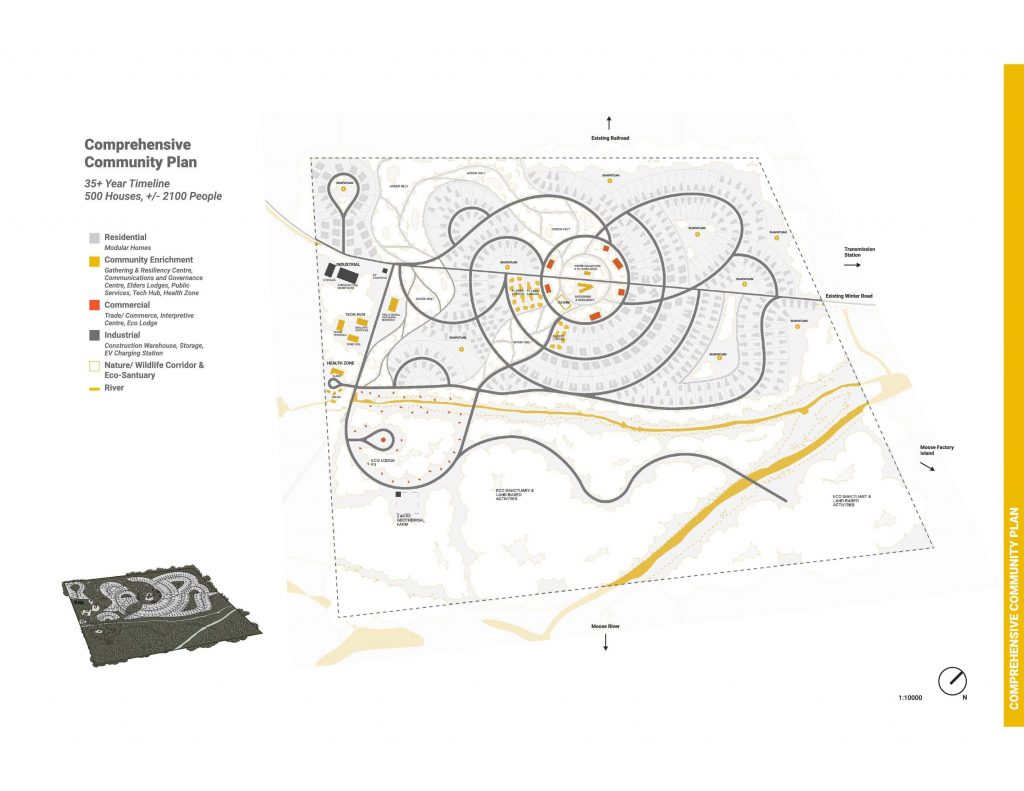
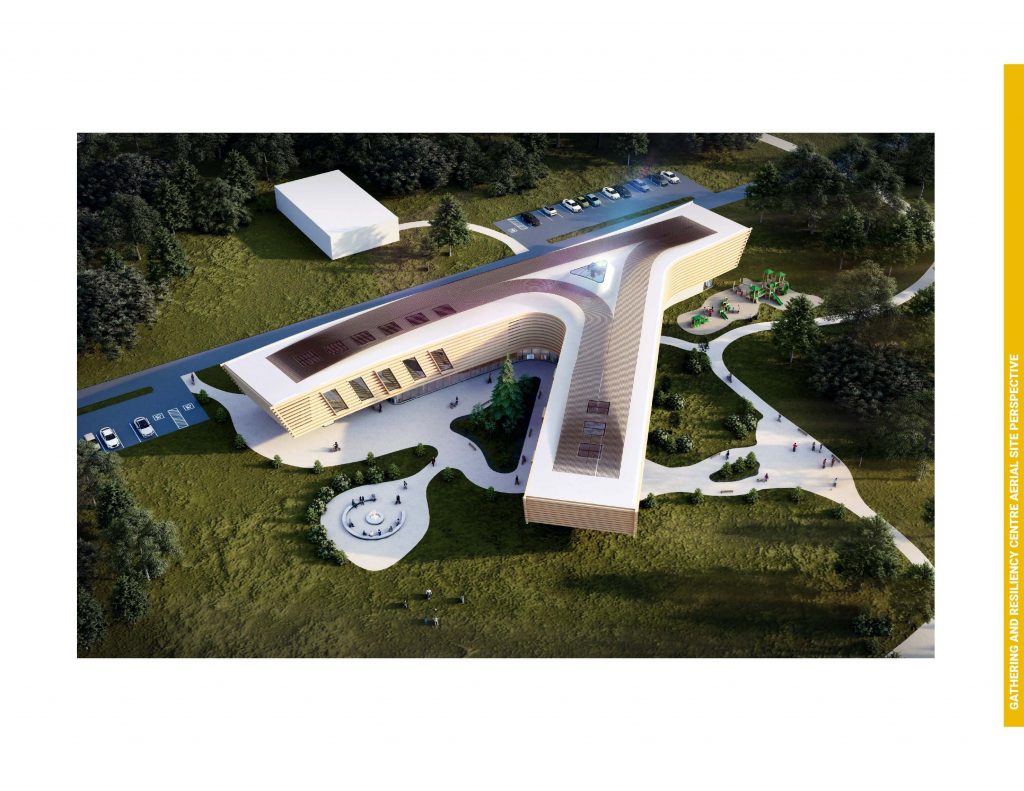
In Winter 2022, students in the Indigenous Option Studio worked with the MoCreebec Eeyoud First Nation in Moose Factory in Northern Ontario on the design of a new community layout with supportive infrastructure.
Project by Megan Combaluzier, Sarah Fahmy, Otmar Melhado, and Robert Oleksiak
Looking Ahead
The January 2023 Global Indigenous Option Studio will venture to Cuzco, Peru, seeking to establish a North-South Global Indigenous Partnership.
The Peru Option Studio will engage with the United Nations Department of Economic and Social Affairs of Indigenous Peoples Report (2008) to understand how climate-induced displacement is having a growing and disproportionate impact on the most vulnerable communities. “Climate change exacerbates the difficulties already faced by Indigenous communities, including political and economic marginalization, loss of land and resources, human rights violations, discrimination, and unemployment,” says the report.
While juggling his PhD commitments with teaching and a consulting practice, Chakasim continues to question and look for ways to foreground Indigenous knowledge.